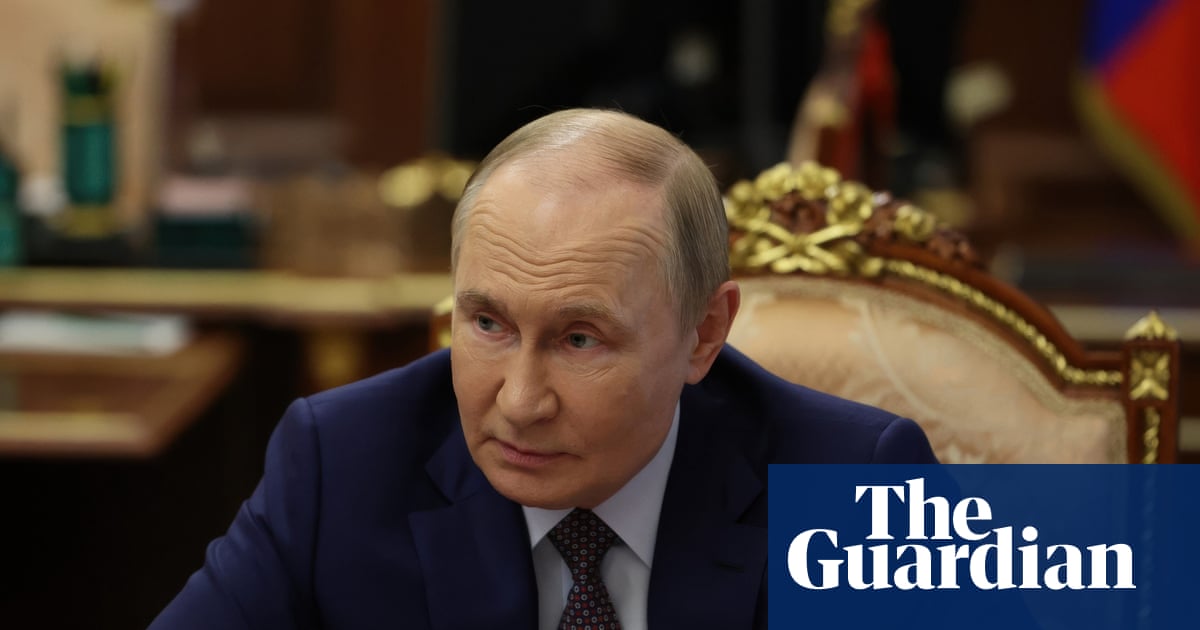For Ukraine, the break in the frontline is unfortunately timed. Lightly armed Russian saboteur groups – three on one count – cut though Ukrainian positions in the Donbas countryside east of the key junction at Dobropillia. Though one group has been eliminated, as of Tuesday two were thought to remain at large – and although their numbers are small for now, perhaps 20 to 30, the breach is significant.
At the beginning of the year it was safe to visit Dobropillia, which had become a bustling market centre busy with soldiers and locals, nearly 15 miles north of the frontline in Pokrovsk. But since then the town, where once busy supply roads from Pokrovsk to Kramatorsk split, has come under sustained attack with glide bombs, while FPV (first person view) drones strike targets on the move.
It is part of an increasingly coordinated battle strategy by the invaders. Experts say Russia has become more effective at targeting Ukrainian drone teams in the field and forces on the move. Even before the weekend, the southerly T0514 supply road to Kramatorsk was at risk of attack, while a Russian military blogger described “the systematic elimination” of Ukrainian crews.
At the same time, Ukraine’s forces appear increasingly stretched. Critics such as Bohdan Krotevych, a former chief of staff at the Azov brigade, say too much attention has been focused on infantry counterstrikes in Pokrovsk – “a soap bubble that will soon burst” – and not enough on augmenting defences to hold existing lines.
Ukraine’s military, at the urging of Volodymyr Zelenskyy, sent in Azov to try to eliminate the infiltrators. But however small their numbers are, there are more Russians nearby. Ukraine’s high command said on Tuesday there were about 110,000 Russian troops near Pokrovsk – and Zelenskyy said another 12,000 were expected to come from Sumy in the north-east to join them in an offensive.
All this comes two days before Donald Trump hosts Vladimir Putin at a US military base in Alaska. It is not entirely clear what Putin has offered to win the prize of a summit on American soil, amid talk that Trump’s negotiator, the real estate developer Steve Witkoff, misunderstood what the Russian leader said last week. However, Zelenskyy thinks Putin will offer to agree to a ceasefire only if Ukraine voluntarily gives up the 3,400 square miles of Donetsk oblast it holds, including Kramatorsk.
It is not an offer that Ukraine can accept, as Zelenskyy has repeatedly made clear in the last week. But Trump may well find it difficult to persuade Putin to shift his position if the Russian leader sees that Kyiv cannot snuff out the incursion. Already Putin thinks Russia is slowly winning the Ukraine war, and while previous advances near Pokrovsk have been costly and slow for the attackers, it is possible there will be an acceleration in momentum.
Last August, Ukraine launched a surprise offensive into the Kursk region of Russia, penetrating more than 12 miles deep. It restored morale in Kyiv and promised a bargaining chip in future peace negotiations. But as Russia fought back, that notional value has disappeared. Though the Kursk offensive prevented Russia from mounting an effective offensive in Donbas in 2024, with the benefit of a longer view the problem for Ukraine may only have been deferred into 2025.
Throughout the war, Russia has shown it struggles to capture small urban centres. It took a year to capture Bakhmut, also in Donbas, in May 2023. Pokrovsk was evacuated last August and was expected to fall within weeks. Though Russian forces have reached the edge of the city they have still not captured it, concentrating instead on slowly trying to envelop it.
Where Russia has been more successful is in rural areas. It will now hope to cut off more roads coming west into Kramatorsk, the heart of Donetsk oblast that Putin so badly wants. The invaders are helped by the growing range of FPV drones, including unjammable fibre-optic craft, rapidly extending the so-called “kill zone” to 9-12 miles or more.
Even so, any Russian progress cross-country is likely to be slow: 34 miles has been occupied in 17 months since the centre of the Donestk front began to give way in February 2024, according to the Institute for the Study of War.
On Wednesday afternoon Trump insisted there would be “very severe consequences” for Putin unless he agreed to a ceasefire in Ukraine. Ukrainian politicians such as Halyna Yanchenko, an MP in Zelenskyy’s Servant of the People party, pin their hopes on Trump levying secondary sanctions on Russia’s oil exports to China, worth €4.1bn last month, partly because there is no prospect of any other form of US intervention.
An extraordinary set of figures provided by Zelenskyy illustrated the key problem Ukraine faces and what Putin is prepared to do. On Monday, he said, there were 531 soldiers on Russia’s side killed, 428 wounded and nine captured, while on Ukraine’s side 18 were killed, 243 wounded and 79 went missing.
Despite the disparity, Russia attacks every day, taking similar numbers of casualties as it does so. As long as there continues to be no domestic resistance in Russia, the likelihood is that Putin will feel he can afford to string out negotiations with Trump, despite the threats.
